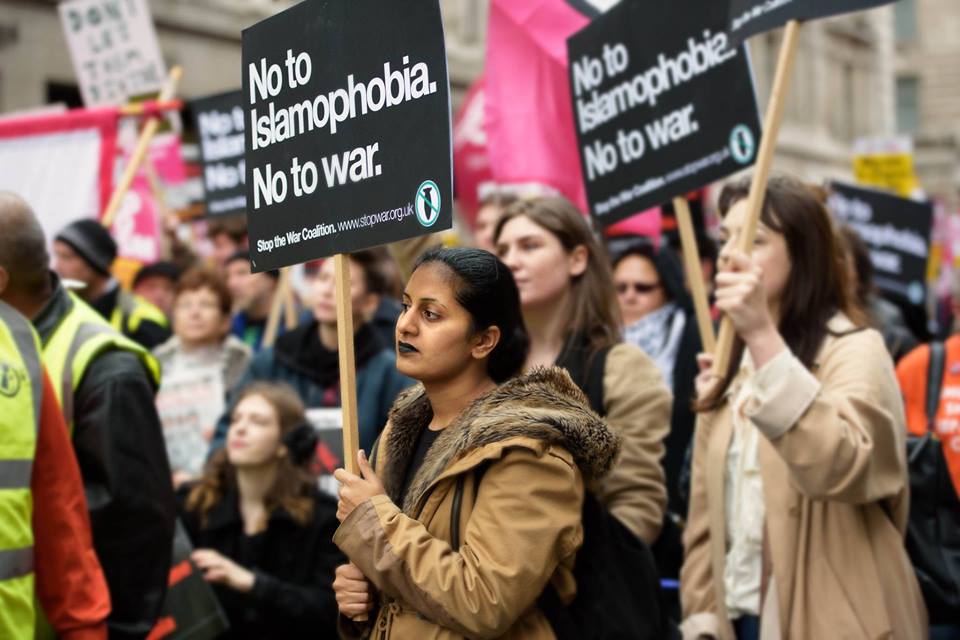A US Navy strike group has been ordered to relocate to the western Pacific Ocean
Philip Ewing

Photo: USS Carl Vinson, licenced under CC BY 2.0
President Trump is responding to another tough foreign policy crisis with gunboat diplomacy, but the second deployment is likely to look very different from the first.
U.S. Pacific Command has ordered the aircraft carrier USS Carl Vinson and its strike group, which includes a cruiser and two destroyers, to “report on station in the Western Pacific Ocean,” instead of sailing for Australia as planned.
The Navy’s official announcement about the decision did not mention North Korea, but leaders in Washington hope that leaders in its capital, Pyongyang, will get the picture.
The strike group is heading back to Korean waters — it also visited last month — following North Korea’s launch of a ballistic missile ahead of the recent visit by Chinese President Xi Jinping to Trump’s golf resort in Florida. Something else also has happened since then: Trump ordered U.S. Navy warships on the other side of the world to attack a Syrian airfield after warplanes based there used chemical weapons in an airstrike that killed scores of people in Idlib, including children.
Trump’s choice to launch that missile strike was a surprise about-face after administration officials appeared to take the heat off Syria’s president, Bashar Assad, saying the U.S. would scrap its previous position that Assad could no longer govern. As the world continues watching to see whether Trump’s attack was a one-time outing designed to send a message — or the first shot in a new war against Assad’s regime — North Korea’s regime has new reason for pause.
Or so Washington hopes.
“North Korea is looking for trouble,” Trump wrote on Twitter on Tuesday. “If China decides to help, that would be great. If not, we will solve the problem without them! U.S.A.”
The president’s warning followed tough talk over the weekend by other administration leaders.
“This is a rogue regime that is now a nuclear-capable regime, and President Xi and President Trump agreed that that is unacceptable,” national security adviser H.R. McMaster said on Fox News Sunday. “The president has asked us to be prepared to give him a full range of options to remove that threat to the American people and to our allies and partners in the region.”
And before that, Secretary of State Rex Tillerson said that “all options are on the table” as the Trump administration calculates how to deal with the threats North Korea poses to its neighbors and, potentially, the United States.
In practical terms, however, Trump and his aides may be able to do less than they did in Syria. In that case, Tomahawk cruise missiles launched from two Navy destroyers destroyed Syrian warplanes, air defense systems, fuel and other supplies. But nothing similar is likely from the Carl Vinson or its escorts — in fact, if any shots are fired it could be the start of a serious major conflict.
In Syria, the United States could hit a target with a low chance of it striking back, in the midst of a conflict that’s already been raging for years. In Korea, Kim Jong Un has many potential ways to respond quickly and savagely by lashing out at a close U.S. ally, South Korea, which hosts nearly 30,000 U.S. troops to help defend it.
That means the Navy can’t change the conversation by hitting North Korea with a few cruise missiles the way it did in Syria. North and South Korea have tens of thousands of troops and huge arsenals pointed at each other on each side of the demilitarized zone that separates them. Occasional flare-ups since the armistice in 1953 have claimed some lives, but the peninsula hasn’t seen major combat.
The stakes, however, are higher than they’ve ever been: North Korea is building nuclear weapons and marching toward the ability to fit them atop its ballistic missiles. That means it could hit South Korea; another archenemy, Japan; or potentially even the continental United States in a few years.
North Korea says that it would respond to any military action by ordering a full retaliation, putting millions of lives in immediate danger. Pyongyang has further compounded the problem by deploying its ballistic missiles on mobile launchers. If a crisis reached a flashpoint, North Korea watchers say there’s no guarantee the U.S. military could find and destroy all the missiles quickly enough to stop a launch.
There’s also no telling how North Korea’s youthful strongman, Kim Jong Un, might respond to a serious military crisis, or how brittle his regime might prove. If Kim and his top aides were killed in a U.S. attempt to decapitate North Korea before it could order a ballistic attack, that might cause the whole government to collapse.
North Korea’s patron, China, which supplies much of its food and fuel, would not look kindly on any such outcome, or on any military action by the United States. Beijing faulted Trump’s attack on Syria after Xi’s visit and although the two leaders “reaffirmed their commitment to a denuclearized Korean peninsula,” per the White House, China has given Trump no commitment to rein in Kim.
Pyongyang, meanwhile, warned of “catastrophic consequences” if Washington tried to follow up its Syria attack in North Korea.
That’s actually a step down from North Korea’s rhetoric from the last time the Carl Vinson strike group sailed near the Korean Peninsula, when it said “a knife will be stabbed into the throat of the carrier.”
But despite all the supercharged rhetoric and intense regional scrutiny, the ships came and went then without incident, the way American warships have for decades. As the Carl Vinson and its escorts make their way north again now, the world is watching to see whether this visit also goes according to routine.
Source: NPR
